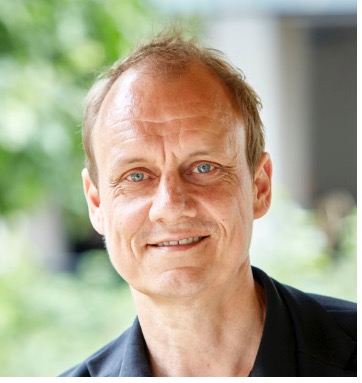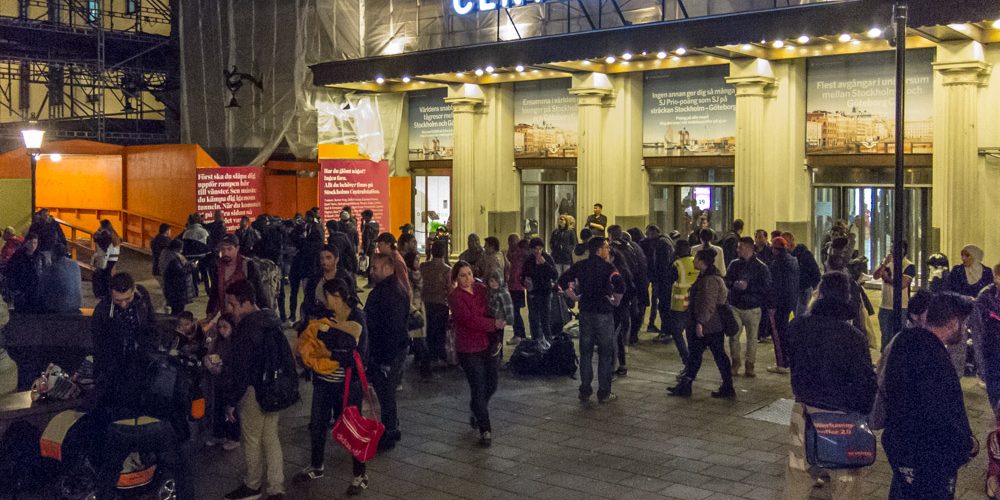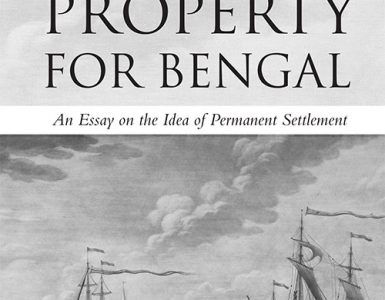Adrian Favell
Europe desperately needs new migration policies—and thinking. In the 1990s and early 2000s, mainstream policy makers and researchers alike were holding out for “managed migration” in the continent: a potential “win-win-win” scenario that might see demographic benefits of new migration within and to Europe, integration of new migrant groups, and positive development effects via remittances and global networks on sending countries. But, as captured by Hein de Haas’s pendulum mood swing in migration research (2012), the economic and political crises of recent years have seen thinking return to defensive concerns of border security and limiting numbers among the policy minded; and, among autonomous researchers, to an implacably critical stance on the ongoing devastation wrought by a colonial, racist West.
In his ambitious new book, A Modern Migration Theory: An Alternative Economic Approach to Failed EU Policy (2021), Peo Hansen offers a scathing assessment of how Europe’s politicians, policy makers, and applied researchers have come to a consensus on the alleged trade offs, between “protecting” European welfare states and stabilising “native” political hostility to immigration, versus the rights or mobility that may be offered to migrant populations. Yet this is a book willing to engage upfront in technical debate about an alternative economics to ground a constructive, but realist, approach to the reception of refugees, enabling the humanitarian obligations of European states to be squared with the potential benefits of new migrations.
Hansen draws his conclusions from a case study of the regenerative effects of the resettlement of refugees among depopulated and chronically ageing populations in remote regions of Sweden. From 2015 to 2017, as Sweden admitted, along with Germany, a very large proportion of asylum seekers in Europe, it abandoned fiscal prudence to invest in their settlement. Despite the success of this policy, which multiplied benefits for local governments, the private sector, and the migrants themselves, it was shut down, Hansen argues, by national politicians with false budget balancing ideas based on the household analogy of “sound finance”, as well as the wider austerity imposed by the EU.
Yet, it could have been viewed differently in other “functional finance” terms: if expenditure had been understood not as a money spent as a “loss” against tax revenue, but as new finance that a government can always create and which is never lost when it is invested in “real” actors and resources who are using it in the economy.
As has been found out in the UK amidst rampant post-Brexit and COVID expenditure by Boris Johnson’s Conservatives, governments can certainly raise resources out of nothing, run up debt, spend on public services, social protection and inclusion for vulnerable populations, and all kinds of actors and institutions at the local level can benefit from this “levelling up”—when the politics of this suits them. In other words, the magic money tree was and is magic. Hansen makes the same point about refugee reception in Sweden, and the game changing potentials of COVID: the economics of austerity were a lie.
We are rich and affluent, and can afford to be good to disadvantaged and suffering populations around the world, and we will be a better and richer society for it.
Here, the book brings in Modern Monetary Theory (“MMT”), to take what appears still to be an essentially Keynesian turn. The theory at the heart of the book echoes what others, including the iconic new generation Democrat politician, Alexandra Ocasio-Cortez, have been saying in the US. Yes. We are rich and affluent, and can afford to be good to disadvantaged and suffering populations around the world, and we will be a better and richer society for it.
This is an important message: certainly for Sweden, whose much-admired welfare state, education system and public services are in decline under neoliberal austerity, and which has reaped the consequences — as almost everywhere across advanced liberal democracies — in terms of rising racism and anti-immigrant populism. But it is neither a new political economy, nor is it a new migration theory. Economists will have to assess whether tying the basic critical message to a controversial approach in contemporary economics makes technical sense. Yet even among economists, it is overstated to say that there is a negative consensus on the costs of recent migration.
Many economists are often quite sanguine about the accumulative labour market and social effects of even low skilled migration: in terms of the lump of labour fallacy, ethnic entrepreneurship, complementarity, and social diversification, for instance (Fingleton et al 2019). Had Hansen considered the UK, there would be little disagreement: large scale intra-EU mobilities and ongoing international migration of all kinds was always an economic benefit; it was only unsustainable in a political sense (Portes 2019). And even the neoliberal George Borjas makes arguments about the cumulative positive selection effects of refugee migration, relative to what US immigration has always made easier—family reunification of dependents for low skilled workers (Borjas 1989).
More obvious targets are influential sociologists and political scientists who have bought into the trade-off argument: most prominently Martin Ruhs in The Price of Rights (2013), whose extensive work with the Swedish political scientist Joakim Palme has resonated very strongly in European policy circles (see their REMINDER project). Hansen also singles out variously positioned scholars such as Gary Freeman, Christian Joppke, Virginie Guiraudon, and Joseph Carens, who advocated this dominant agenda accepting the “progressive’s dilemma” (see Parker 2017) in the liberal political theory of migration. Yet it is odd that Hansen accepts the assignation of refugee population to an automatically low skill, low productivity categorisation.
A plausible economist’s view of recent asylum seeking would say there are also selection effects at work among humanitarian population flows: asylum seekers can be younger, more educated, more internationalised, more “middle class”, than some migrants (these are also reasons why they might face political persecution). They often no longer fit the strict criteria of international refugee law, but they do bring personal resources (Crawley and Skleparis 2017). At least, nowhere in this book does Hansen attempt an empirical analysis of the asylum seeker population in Sweden in these terms (economists refer to this in terms of “unobserved skills” or “capabilities”). That is, to see whether these attributes might account for the positive growth effects, say, relative to other populations that populists identify (stereotypically) as an unwanted “burden” in European societies: such as homeless Roma populations, or family dependents from rural origins in Asia or Africa who arrived through marriage migration.
There is also an uncomfortable truth here: for the privileged few who make it to a citizenship ceremony in the West, there are very many more who are left behind.
There is also an uncomfortable truth here: for the privileged few who make it to a citizenship ceremony in the West, there are very many more who are left behind. Globally speaking, to echo at once, Gayatri Spivak, Giorgio Agamben and Pierre Bourdieu, the truly abject and subaltern can neither speak nor move. It invariably requires some capital—human, economic, or social—to be able to get very far from the political and climate catastrophes pushing these new international migrations. This is why so many displaced populations never make it to Europe and are never recognised as having legitimate asylum claims. I will return to the implications of this point.
Other questions might be raised over Hansen’s insistence that the bottom-line failure of migration policy in Europe, lies with the European Union. The chapters on representative “EU policy” mostly discuss EU directives. Sometimes, “Europe” is, then, the European Commission: in historical terms a moderately progressive organisation, which along with the Parliament, tries to set bureaucratic and legal norms for European societies, that spell out constitutional obligations and policy goals. Hansen rightly charts how the Commission has slid from trying, for instance, to level up the rights of Third Country Nationals with free moving intra-EU citizens in the early 2000s, to the nadir of a right-wing Commission President, Ursula von der Leyen, crowing over a “European shield” on the Greek border holding back unarmed women, men and children in February 2020.
This is indeed now “EU policy” but, as is well know, the Commission and Parliament are relatively toothless organs, whose directives are at best political wish lists at the national level. Sometimes, Europe for Hansen is the more hard-nosed and consequential, Council of Ministers, which does indeed modify “EU policy” from the Commission into often reactionary lowest common denominator laws and treaties. Yet more often than not, in Hansen’s account, the “EU policy” he is critiquing is something being articulated and driven by national leaders—Merkel or Macron—whose prime audience is always a national media and a national electorate. European democracy in the end is the big problem.
… the overwhelming determinant factor in all these developments has been public opinion at the national level, cultivated and courted by populist national politicians.
So, when Hansen refers to “Brussels” as the central actor, it can sound like a rather Eurosceptic simplication of the EU as a multi-levelled political system. It is certainly right to be disappointed in the combined effects of the lawyers, bureaucrats, NGOs and other lobbyists, who for years have tried to extend EU policy and law on human, minority, or gender rights, or antidiscrimination, to make migration policy more humane. EU institutions have certainly played a big part in helping member states coordinate a common European border and policing regime. And, it is true, that maintaining the Eurozone tied the hands of national governments within the Eurozone against printing money as a way of getting out of austerity (although not Sweden, with its own “sovereign” currency). But a fully grounded political analysis of European migration policy would conclude that the overwhelming determinant factor in all these developments has been public opinion at the national level, cultivated and courted by populist national politicians. This is an absent dimension in a book offering a comprehensive political economy for a better Europe.
Early on, Hansen identifies three claims about refugee migration: that they are fiscal burden, that there is therefore a trade off against the sustainability of the welfare state, and that these two factors have poisoned European politics against all immigration. Yet even if the first two points are defeated by the “real” “facts” (to echo Hansen’s curiously positivistic rhetoric), the third is not affected: these rhetorical constructions are nevertheless determining political outcomes. A more systematic reference to the comparative political science of public opinion and electoral competition on how “immigration” has driven the European project as a whole into the arms of neoliberal neonationalism would be useful (see de Vries 2018; Vachudova 2021)
A comparative focus on the UK here would also be instructive. That is, how “EU immigration” was indeed conceived and successfully framed, by Farage, Johnson, and a barrage of respectable academics, as a political spectre and sliding signifier, that could be associated with images of asylum seekers in central Eastern Europe, Kurdish minorities in Turkey, British Muslims in Northern towns, Windrush-origin Black British, temporary CEE mobile workers, and even eventually West European professionals, none of which should have been seen, legally or geographically, as “immigrants” in the UK (Favell 2020).
Politically, Hansen suggests that a multi-party consensus could be imagined on the MMT driven, levelling up type policies in Sweden and Germany to “integrate” the new waves of asylum seekers, and this could be scaled up for Europe as a whole: even to the extent that the world’s 26 million refugees could all be received. This would be a better world; although a much better one would be a world in which there were no asylum seekers, and where one way immigration from poorer countries was much less common than free movement back and forth.
Even a cursory contrast here with the migration and development literature of the 1900s and early 2000s, reveals that Hansen draws a disappointingly conservative conclusion, arguably locked in a methodologically nationalist logic. Not once in the book does he mention transnationalism, or pose questions of what happened to the societies the asylum seekers left behind: surely the most important question in any migration theory.
In the preface, Hansen recounts a hospital visit with his daughter, and meeting doctors, nurses, cleaners, and taxi drivers who were all friendly, under-appreciated, “immigrants”. This is all great for Sweden, but how exactly is this good for Eritrea or Afghanistan, Syria or the Palestine? Every one of these successfully “integrated” workers is a net loss for their sending country, until and only if the social resources that have been invested in them, in fact seep back out of the rich and golden Swedish state, and start to have benefits in the countries at the bottom of the development index, and outside the circle of US-led military-industrial domination. That is, when we do start to see real redistributive costs for the rich Western nation-state, and its dis-integrative effects on the hegemony of Western nationhood (on this, see Favell 2022)?
In the 1990s and early 2000s, a lot of scholarship tried to focus this potential change on diasporic homeland politics, on clandestine transnational family and business structures, and on financial and social remittances flowing out and back. Solidarity with asylum seekers, and pan-working class politics is now often cited as the precursor of a new international politics (Penchaszadeh and Sferco 2019; Milkman 2020)—but, as these examples suggest, it should be solidarity with migrants who aim to change the regimes that oppress and dominate them, and who oppose the North Atlantic perpetuation of colonial dependency/extraction, and invidious puppet regimes around the world; and not only “solidarity” as the image of “intercultural integration” scholarship, which pictures happy asylum seekers in Glasgow, Malmö, or a small village somewhere outside of Umeå, successfully building new lives in the West (see, for example, Home Office 2019).
A truly radical migration theory might document and support how desperate but smart “migrants”, find means to have it both ways like the “free movers” of the Global North (see, for example, Schapendonk 2020); to, in fact, turn benefits hand outs into cunning “tourism”, to funnel “integration” resources out of the nation back to the family and friends in sending countries, and ultimately to instrumentalise and demystify the “citizenship” and “rights” being offered to them in the West—whose exclusivity and privileges so devalue their own, and which cements passports as the most important currency of “global inequalities” (Kochenov 2019).
In other words, how mobile populations continue to bend, poke holes in, and find ways back and forth, across the carceral border regime that is built on linear, state-centred, and complacent ideas of “immigration”, “integration” and “citizenship”—a payback analogous to the kind of “reparations” from the West to the Rest, starting to be imagined by decolonial scholars (and, as suggested by, i.e., De Genova et 2018). Perhaps what is needed is not so much a “modern” migration theory, as a revolutionary one.

Adrian Favell is Chair in Sociology and Social Theory, and Director of the Bauman Institute, at the University of Leeds. He is the author of Philosophies of Integration (1998), Eurostars and Eurocities (2008), a collection of essays, Immigration, Integration and Mobility (2015), and a forthcoming work in migration theory from Polity, The Integration Nation (2022). Website: https://www.adrianfavell.com.
Header Image Credit: Frankie Fouganthin
References:
- Borjas, George. 1989. ‘Economic theory and international migration’. International Migration Review 23,3: 457-485. https://doi.org/10.2307/2546424
- Crawley, Heaven and Skleparis, Dimitris. 2017. ‘Refugees, migrants, neither, both: categorical fetishism and the politics of bounding in Europe’s “migration crisis”’. Journal of Ethnic and Migration Studies. 44,1: 48-64. https://doi.org/10.1080/1369183X.2017.1348224
- De Genova, Nicholas, Garelli, Glenda and Tazzioli, Martina. 2018. ‘Autonomy of asylum? The autonomy of migration undoing the refugee crisis script’. The South Atlantic Quarterly 117,2: 239-265. https://doi.org/10.1215/00382876-4374823
- de Haas, Hein. 2012. ‘The migration and development pendulum: a critical view on research and policy’. International Migration 50,3: 8-25. https://doi.org/10.1111/j.1468-2435.2012.00755.x
- de Vries, Catherine. 2018. Euroscepticism and the Future of European Integration. Oxford University Press, Oxford.
- Favell, Adrian. 2020. ‘Crossing the race line: “No Polish, No Blacks, No Dogs” in Brexit Britain? or, the Great British Brexit swindle’, in sp. ed. ed. by Francesco Duina and Frédéric Mérand, ‘Europe’s Malaise: The Long View’, Research in Political Sociology, Vol.27, Oct, pp.103-130. https://doi.org/10.1108/S0895-993520200000027012
- Favell, Adrian 2022, forthcoming (title TBC). The Integration Nation: Immigration, Diversity and Colonial Power in Liberal Democracies. Cambridge: Polity.
- Fingleton, Bernard, Olner, Daniel, Pryce, Gwilym. 2019. ‘Estimating the local employment impacts of immigration: a dynamic spatial panel model’. Urban Studies, 1-17. https://doi.org/10.1177/0042098019887916
- Hansen, Peo 2021. A Modern Migration Theory. An Alternative Economic Approach to Failed EU Policy. Newcastle: Agenda Publishing.
- Kochenov, Dimitry. 2019. Citizenship. Cambridge, MA: MIT Press.
- Milkman, Ruth. 2020. Immigrant Labor and the New Precariat. Cambridge: Polity.
- Parker, Owen. 2017. ‘Critical political economy, free movement and Brexit: beyond the progressive’s dilemma’. The British Journal of Politics and International Relations 19,3: 479-496. https://doi.org/10.1177/1369148117711082
- Penchaszadeh, Anna Paula y Sferco, Senda Inés. 2019. ‘Solidaridad y fraternidad: una nueva clava ético-política para las migraciones’. REMHU: Rev. Interdiscip. Mobil. Hum. 27,55 (abr.), 149-164. https://doi.org/10.1590/1980-85852503880005510
- Portes, Jonathan. 2019. Immigration. London: Sage.
- Ruhs, Martin. 2013. The Price of Rights: Regulating International Labour Migration. Princeton University Press, Princeton.
- Schapendonk, Joris. 2020. Finding Ways Through Eurospace: West African Movers Re-Viewing Europe from the Inside. Oxford: Berghahn.
- Vachudova, Milada. 2021. Populism, democracy and party system change in Europe, American Political Science Review 24, 1. https://doi.org/10.1146/annurev-polisci-041719-102711
TO CITE THIS ARTICLE:
Favell, Adrian 2021. ‘The Integrative versus Dis-integrative Effects of Asylum Seeker Migration’ Discover Society: New Series 1 (1) https://doi.org/10.51428/dsoc.2021.01.0005




